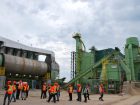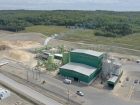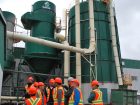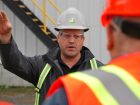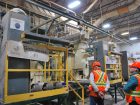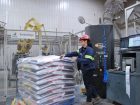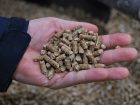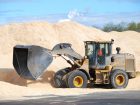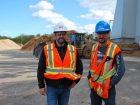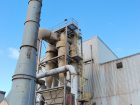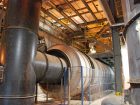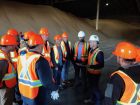
Checking in on New Brunswick’s wood pellet producers
October 11, 2019
By
Maria Church
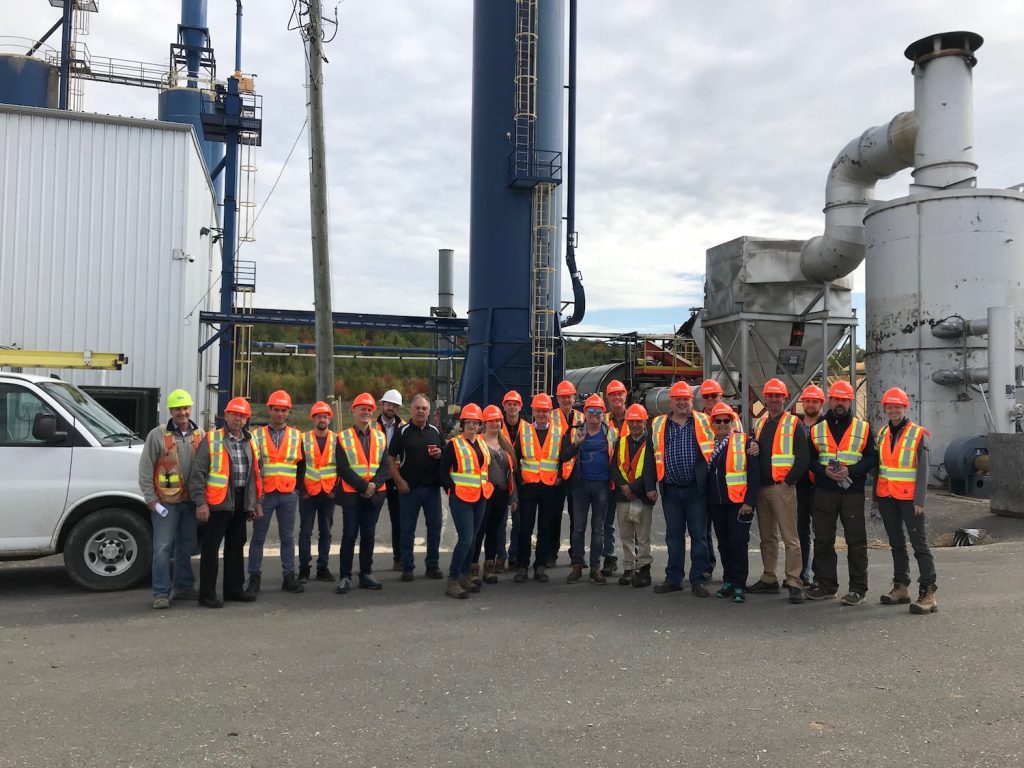 H.J. Crabbe & Sons welcomes a group of wood pellet stakeholders as part of the Wood Pellet Association of Canada post-conference tour in late September.
H.J. Crabbe & Sons welcomes a group of wood pellet stakeholders as part of the Wood Pellet Association of Canada post-conference tour in late September. Fall may be the most beautiful time to visit northern New Brunswick as the Acadian forest’s unique blend of softwood and hardwood trees burst into spectacular shades of red, orange, and yellow.
For those in the business of trees, it’s perhaps the best time to appreciate the impressive diversity of New Brunswick’s forests, which cover more than 80 per cent of the province’s land mass. The timing couldn’t have been better for the Wood Pellet Association of Canada’s 2019 post-conference tour to explore New Brunswick’s pellet and sawmill operations. Representing Canadian Biomass, I joined a group of just over 20 wood pellet stakeholders from North America and Europe on a bus tour of the province’s northern wood operations over two days in late September.
The tour brought us to the five companies in the New Brunswick wood pellet world – H.J. Crabbe & Sons, Groupe Savoie, Shaw Resources, pellet newcomer Grand River Pellets, as well as the Port of Belledune where Eastern Canada’s pellet plants ship to international markets.
H.J. Crabbe & Sons
Our first stop of the trip was in the small town of Florenceville-Bristol, N.B. – home to H.J. Crabbe & Sons random dimension sawmill and two-year-old pellet plant.
The third-generation family-run company was established in 1946. Today, the company owns 16,000 hectares of freehold forest land and has a woodlands division looking after planning, harvesting and silviculture of its SFI and PEFC certified sustainable forests.
Residuals from the adjacent 30 mmbf sawmill directly feed the pellet plant, which is currently producing 16,000 tonnes of premium grade softwood pellets for the heating market. About 90 per cent of the pellets are sold bagged or in one-tonne bags, with the remaining 10 per cent sold in bulk.
A Player Design burner fuelled by bark provides heat for the plant’s drum dryer. A newly installed Kahl 10-tonne pellet mill – the largest Kahl manufactures – is producing about eight tonnes of pellets an hour. The line finishes with a fully automated Premier Tech bagging, palletizing and wrapping system.
Setting a high standard for hospitality, our group, with more than a few European travellers, enjoyed some good ol’ Tim Hortons coffee and donuts before climbing back on the bus for our next stop.
Grand River Pellets
The team at the recently commissioned Grand River Pellets in Saint Leonard, N.B., was our second host on Day 1 of the tour.
All fibre used for the 100,000 tonne-per-year pellet plant is secondary product from Northern New Brunswick and Maine forest products manufacturing facilities. The plant is ramping up production now and staff expect it will meet its capacity by the end of the year.
Three infeed bins feed the plant, allowing it to blend hardwood and softwood fibre. Martin Bokesch, technical leader at Grand River Pellets, said they are continuing to test moisture content and durability of the pellets to find the right mixture of fibre, which determines pellet size and quality.
Five Promill pellet mills working at full capacity will allow the plant to produce about 15 tonnes an hour. The plant will be able to produce both industrial and bagged retail grade pellets.
Grand River Pellets is certified under the Sustainable Biomass Program.
Groupe Savoie
Day 2 began with a trip to Groupe Savoie’s headquarters in Saint-Quentin, N.B., where they operate a hardwood sawmill, pallet plant, component plant and pellet plant. A quick tour through the sawmill, pallet and component plants explains the pellet plant’s 90 per cent intake of hardwood fibre including hard and soft maple, white and yellow birch and aspen.
Groupe Savoie’s vice-president of sales and development, Jonathan Levesque, said the pellet plant purchases some softwood fibre, amounting to between 10 and 20 per cent of their total mix, due to challenges pelletizing pure hardwood.
Three infeed chambers separately contain the softwood, mixed hardwood and bark, the latter fuelling a Wellons burner providing heat to the triple pass MEC dryer. Dried fibre is then treated to a Schutte Buffalo hammer mill before heading to one of three Andritz pellet mills. After screening and cooling, pellets are bagged, placed on skids and wrapped via a Premier Tech bagging line.
Groupe Savoie’s hardwood pellet plant has been running for nine years producing both industrial pellets shipped abroad and residential pellets for the local heating market.
A quick stop at the company’s nearby head office gave us a snapshot of another company affiliated with Groupe Savoie: Biomass Solutions Biomasse (BSB). Founded in 2011 by Groupe Savoie owner Jean Claude Savoie and Malcolm Fisher, owner of Compact Appliances in Sackville, N.B., BSB promotes biomass heating systems throughout Eastern Canada.
BSB distributes OkoFen, Herz, Binder and Mabre biomass boilers. The company was also the first in Canada to operate a bulk delivery pellet truck to supply their customers, including a local church, the Saint-Quentin town hall, Grand Falls General Hospital, and the Collège communautaire du Nouveau-Brunswick’s Shippagan campus.
Tim Horton’s coffee and donuts once again made us a happy tour group before we hit the road off to our next destination.
Shaw Resources
Up next was Shaw Resources’ industrial pellet plant in Belledune, N.B. The plant produces 100,000 tonnes per year of industrial pellets for U.K. utility Drax, shipped out of the nearby Port of Belledune.
The plant’s fibre mix includes both hardwood and softwood, with bark fuelling the plant’s new indoor drum dryer from Player Design, installed last October. Operations manager Robert Boyd says the new dryer will increase their drying capacity.
Four Andritz pellet mills produce about 16 tonnes per hour of pellets, which are cooled and screened before heading to one of three indoor storage silos. Pellet moisture content is continuously monitored via a MoistTech pellet moisture analyzer in addition to the regular operator testing process.
The 11-year-old pellet plant runs two shifts, 24/7, with 10 operators during the day and three at night.
Watch a short video tour of Shaw Resources Belledune pellet plant here.
Port of Belledune
Our final stop of the tour was to meet the folks at the Port of Belledune, less than five minutes from Shaw Resources’ plant. The port, built in 1968, today handles 24 products. In 2018 they shipped 223,948 tonnes of biomass.
We got an inside look at the wood pellet storage facilities, which include a large dust collection system that is active during pellet handling.
WPAC is already in the process of planning for next year’s post-conference tour in British Columbia. Space is limited on these tours and spots fill quickly on a first-come-first-served basis, so stay tuned to www.pellet.org/wpac_agm for news.
Print this page
